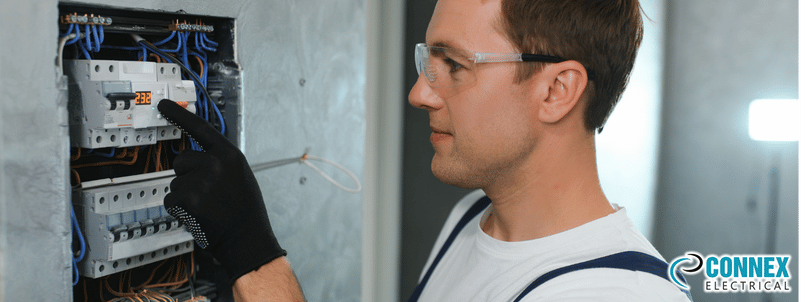Switchboards play a vital role in controlling and distributing electricity in homes, businesses, and factories. Acting as the central hub, they manage the flow of electricity to ensure power is distributed safely and efficiently. Understanding the components and operation of switchboards can help you appreciate the importance of maintaining a reliable and safe electrical system. Especially in areas like Brisbane, where power demands vary significantly across residential and commercial spaces.
What Is a Switchboard?
A switchboard is a central control unit that distributes electricity from one or more sources to different circuits within a building. It ensures that power flows safely to various parts of the structure, protecting against electrical issues like overloads or short circuits.
Switchboards are crucial for maintaining the integrity of an electrical system, as they handle incoming power, distribute it to different circuits, and provide safety mechanisms to prevent electrical accidents.
9 Simple Steps to Learn How a Switchboard Works
Here’s a suitable title for a detailed, 9 step-by-step guide explaining how a switchboard functions:
Step 1: Incoming Power
Electrical power enters the switchboard from external sources, typically utility power lines or backup generators. This incoming power is often at a high voltage level suitable for transmission.
Step 2: Main Disconnect
A main disconnect switch or circuit breaker is used to control the overall power supply entering the switchboard. This can be switched off for maintenance or in emergencies to cut off all power coming from the source.
Step 3: Power Distribution
Inside the switchboard, large metal bars called busbars conduct electricity from the main power supply to various branch circuits. Busbars are designed to handle large currents and distribute them safely.
Step 4: Overcurrent Protection
Each branch circuit is protected by a circuit breaker, which automatically shuts off the power if excessive current, a short circuit, or an overload is detected. This helps prevent electrical fires and equipment damage.
Step 5: Branch Circuits
Power is routed from the busbars through individual circuit breakers to different parts of the building or facility. Each breaker controls a specific circuit powering a particular area or type of device.
Step 6: Control and Monitoring
Modern switchboards often include digital meters and diagnostic tools that monitor voltage, current, power usage, and other electrical parameters. These tools help in managing energy efficiency and identifying issues before they become serious problems.
Step 7: Manual Operations
Operators or electricians can manually operate the switchboard, using switches and controls to engage or disengage circuit breakers, reroute power, or adjust settings according to operational needs.
Step 8: Maintenance and Safety Checks
Routine inspections and maintenance are performed to ensure that all components of the switchboard are functioning correctly and safely. This includes testing circuit breakers, cleaning busbars, and verifying the integrity of connections.
Step 9: Emergency Handling
In the event of an electrical emergency, such as a fire or system failure, the switchboard is equipped with emergency shutoff mechanisms to quickly disconnect power and minimize damage.
By following these steps, a switchboard efficiently manages the distribution of electricity within a facility, ensuring that energy is delivered where needed, while protecting the system from potential hazards
5 Key Components of a Switchboard
- Main Switch: This allows the power to the switchboard to be turned on or off. It acts as a control to cut the power during maintenance or emergencies.
- Circuit Breakers: Each circuit within a building will have a corresponding breaker in the switchboard. These are used to protect electrical circuits by automatically cutting off the power when any overload or short circuit is detected.
- Busbars: These are thick strips of copper or aluminum that conduct electricity within the switchboard, distributing power from the main switch to various circuit breakers.
- Meters: Most switchboards include meters that measure the amount of electricity used, which is useful for monitoring and managing energy consumption.
- Surge Protectors: These protect the electrical system from voltage spikes that can occur from lightning strikes or other disturbances.
Importance of Maintenance
Regular maintenance of switchboards is essential to ensure they function efficiently and safely. This includes cleaning to remove dust and debris, checking connections for tightness, inspecting for signs of wear or damage, and testing circuit breakers and fuses for functionality. Regular inspections by a qualified electrician can prevent electrical accidents and extend the life of the electrical system.
FAQs
What is the main function of a switchboard?
Why are circuit breakers important in a switchboard?
How often should switchboards be maintained?
Can I repair a switchboard myself?
Need professional help with your switchboard in Brisbane or surrounding areas? Connex Electrical provides expert services for switchboard installations, repairs, and maintenance, ensuring your electrical systems are safe and efficient. Call Connex today for reliable, top-quality switchboard solutions!

